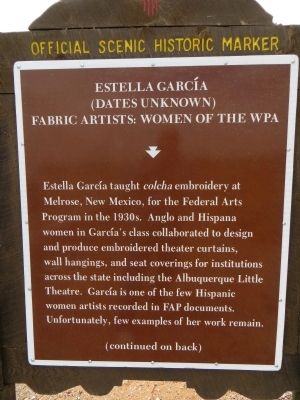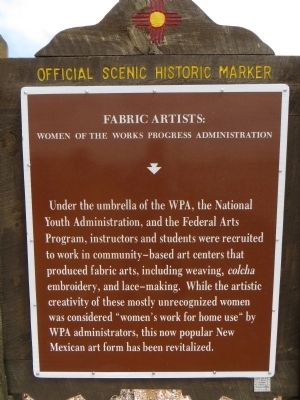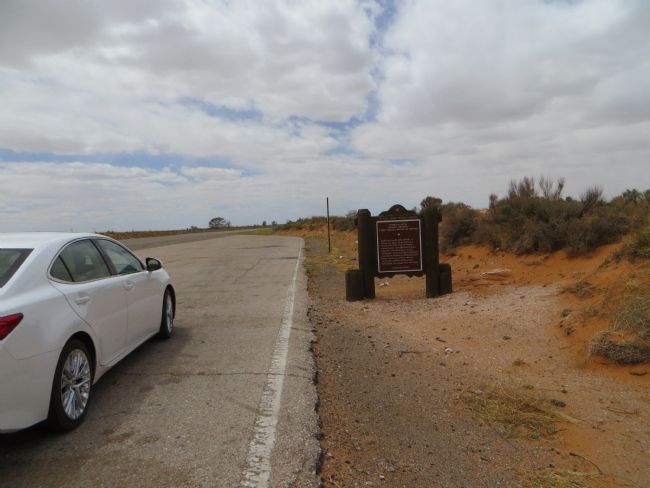Near Melrose in Curry County, New Mexico — The American Mountains (Southwest)
Estella García/Fabric Artists: Women of the WPA
Side A:
Estella García
Estella García taught colcha embroidery at Melrose, New Mexico, for the Federal Arts Program in the 1930s. Anglo and Hispana women in Garcia's class collaborated to design and produce embroidered theater curtains, wall hangings, and seat coverings for institutions across the state including the Albuquerque Little Theatre. García is one of the few Hispanic women artists recorded in FAP documents. Unfortunately, few examples of her work remain
Side B:
Fabric Artists:
Women of the Works Progress Administration
Under the umbrella of the WPA, the National Youth Administration, and the Federal Arts Program, instructors and students were recruited to work in community-based art centers that produced fabric arts, including weaving, colcha embroidery, and lace-making. While the artistic creativity of these mostly unrecognized women was considered “women's work for home use” by WPA administrators, this now popular New Mexican art form has been revitalized.
Erected by New Mexico Historic Preservation Division.
Topics and series. This historical marker is listed in these topic lists: Arts, Letters, Music • Charity & Public Work • Hispanic Americans • Women. In addition, it is included in the New Mexico Women’s Historic Marker Initiative series list.
Location. 34° 25.332′ N, 103° 35.535′ W. Marker is near Melrose, New Mexico, in Curry County. Marker is on U.S. 60 at milepost 366, on the right when traveling west. Touch for map. Marker is in this post office area: Melrose NM 88124, United States of America. Touch for directions.
Other nearby markers. At least 1 other marker is within 9 miles of this marker, measured as the crow flies. Llano Estacado (approx. 8.7 miles away).
Credits. This page was last revised on June 16, 2016. It was originally submitted on May 14, 2014, by Bill Kirchner of Tucson, Arizona. This page has been viewed 947 times since then and 27 times this year. Photos: 1, 2, 3. submitted on May 14, 2014, by Bill Kirchner of Tucson, Arizona. • Bill Pfingsten was the editor who published this page.


